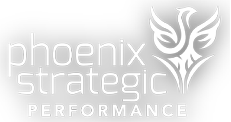Client Business Plans are one of the most critical sales business tools. A big problem with these plans is that they often neglect to identify the most important information about the client—the qualitative data! What do I mean?
The Total Client Buying Center (TCBC)
I’ve seen countless business plans that identify the names of people within the buying center. But remember, a name is only a name without an operating context associated with the name. I often hear salespeople say, “I have the company organization chart.” So what! A name on an organization chart is usually meaningless. It is simply a ‘what’ data point. There is so much more to this name that a great salesperson must know to understand the buying landscape truly:
- Who is in the TCBC?
- How does that TCBC operate?
- What role does each person play in the TCBC?
- With whom do people within the TCBC interact?
- What are those relationships?
- Are they formal, hierarchical lines of authority and responsibility?
- Are they informal, matrix lines of authority and responsibility?
- What impact do these people have on the ultimate buying decision?
- How long will the decision-making process take?
- What are other existing supplier relationships with each person in the TCBC?
You must have detailed operating context information for each name in your business plan. Only then does that name mean something important.
Challenge: Convert the Client Organization Chart into the Client ‘Organigram’©*
What is an ‘organigram’? It is the realignment of the formal organization chart to depict how an organization works informally. It goes beyond people’s organizational roles to understand the way people operate in those roles and, therefore, how the organization works. The ‘organigram’ reflects:
- Who are the decision-makers?
- Who are the influencers?
- Who are the gatekeepers?
- Who are the bottlenecks?
Why do salespeople tend to avoid asking about TCBC information?
To ask for information about TCBC means the salesperson must ask what feels like very personal questions. And, if those questions are improperly asked, that’s precisely how those questions come across, as too personal and impertinent. When these questions are improperly asked, they can disrupt the critical relationship-building process. So, more often than not, salespeople avoid asking these questions and assume critical TCBC information. Here’s how TCBC assumptions can kill your sales efforts, create invalid operating contexts, waste your time (your scarce resource that salespeople must manage), and introduce significant flaws into your Client Business Plan. Some results include, but are not limited to:
- No business because salespeople are talking to the wrong person who may not be a key player in the decision-making process
- Delayed business results and missed sales targets due to a lack of understanding regarding the time to make decisions by the key people in the TCBC
- Delayed or no business because the salesperson did not develop business relationships with all the essential people in the TCBC
TCBC Information - The Most Critical and Difficult Questions to Ask
There is indeed a mindset and process that exceptional salespeople must both understand and be able to implement/execute. The TCBC questions have a structure, sequence, and skill set that must be followed. Any gaps in knowledge and skills in this area will create flawed Client Business Plans, leading to inaccurate sales projections and missed strategic initiatives. Both knowledge and skills, at this stage, must be consciously and methodically applied.
Remember, there is nothing casual or haphazard about building data about the TCBC.
To better understand the Total Client Buying Center (TCBC), I invite you to learn more about our Sales & Business Development program, which is part of the Phoenix Strategic Performance Institute. This program helps you strategically align your sales process with the relationship sales process, accelerating corporate growth and building strategic value.





